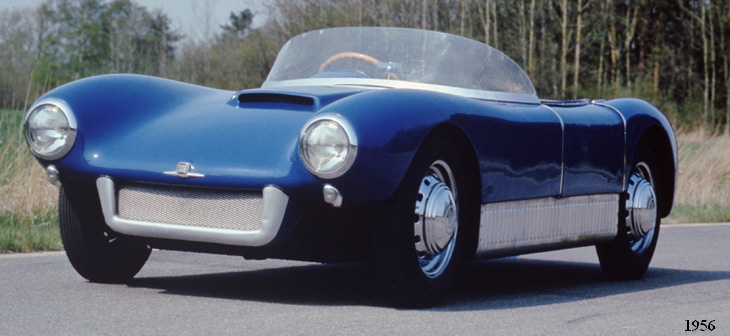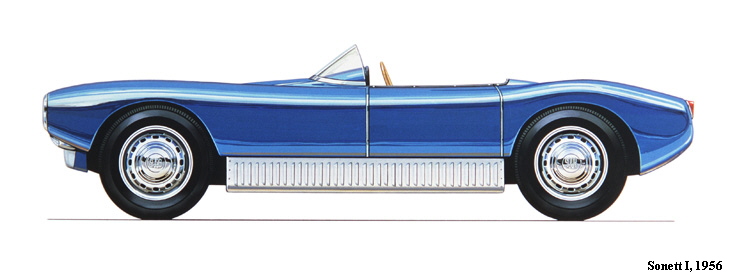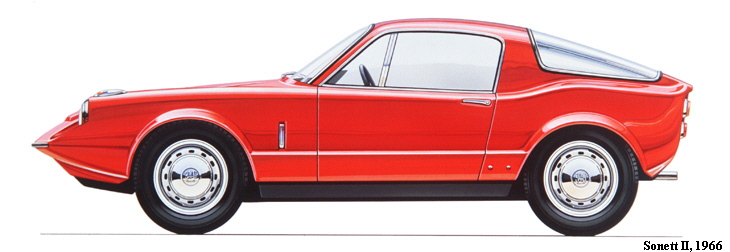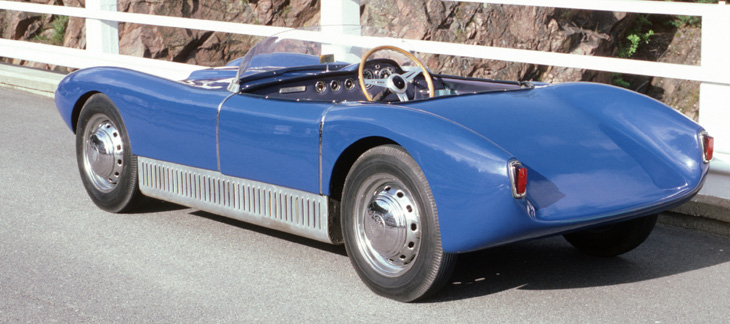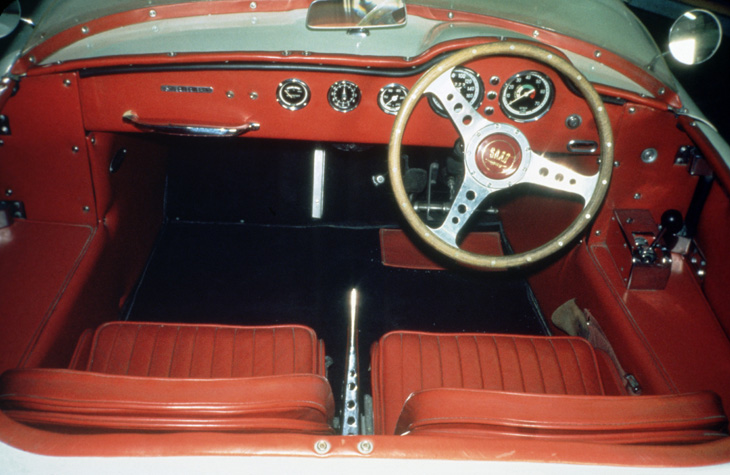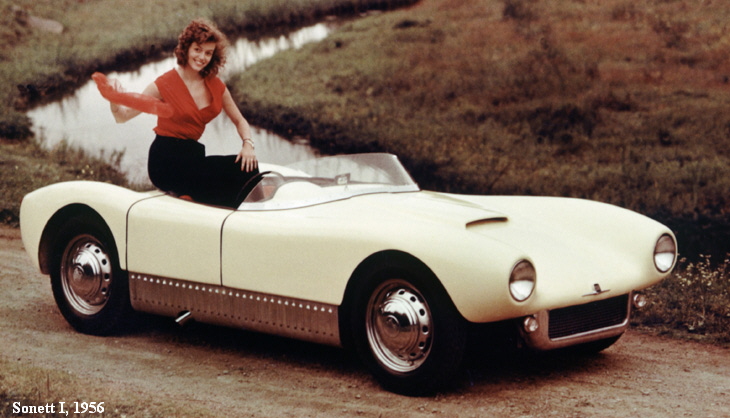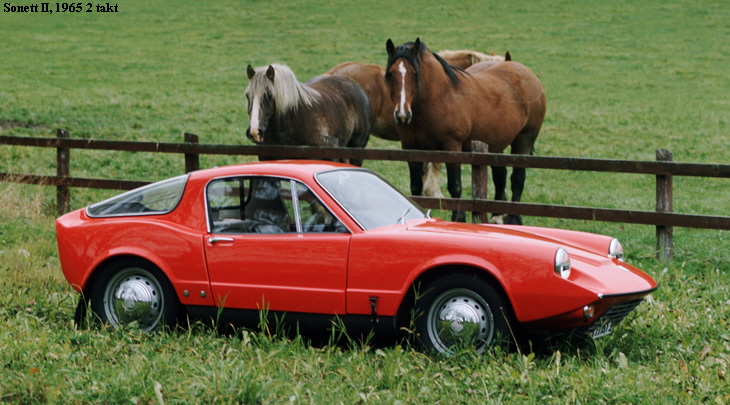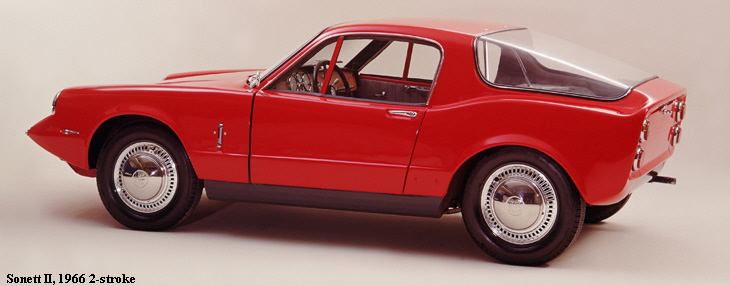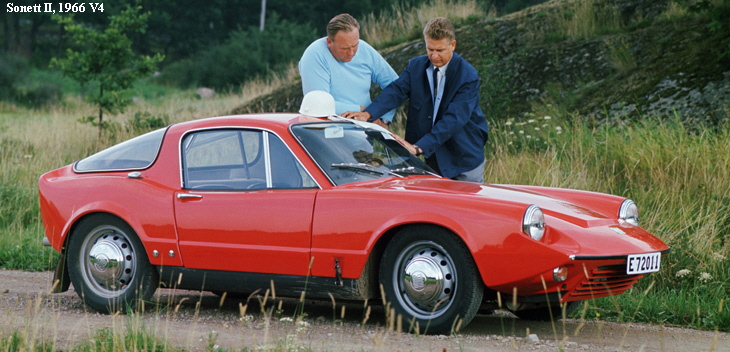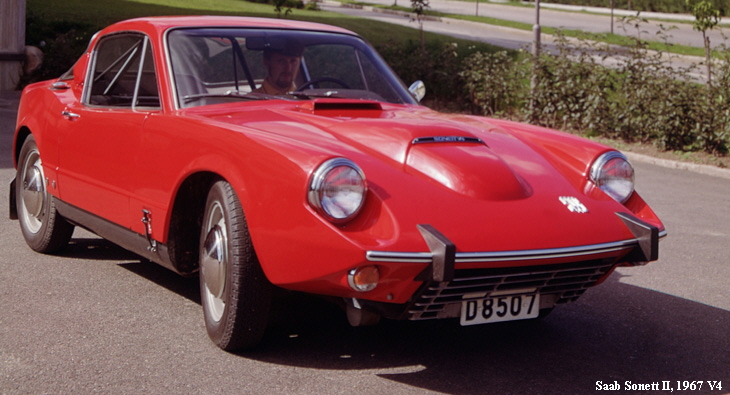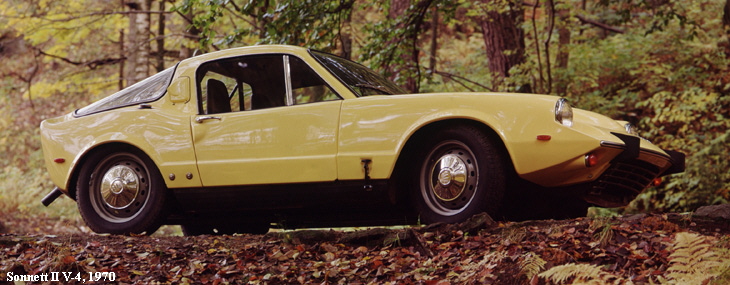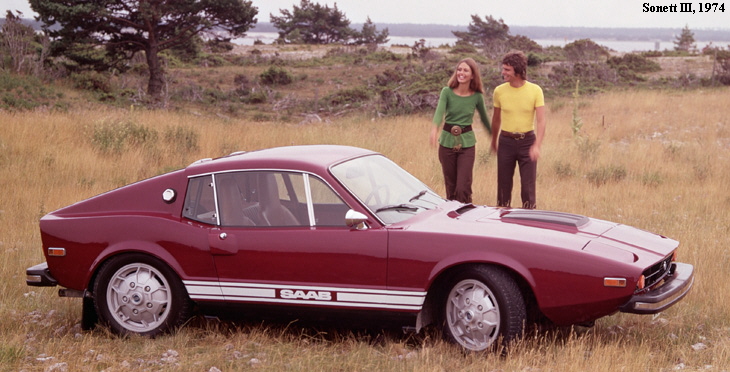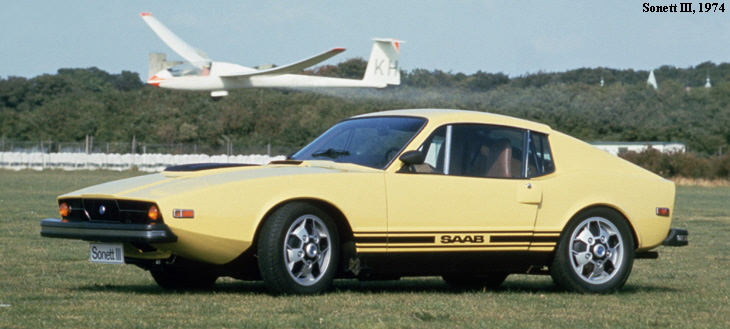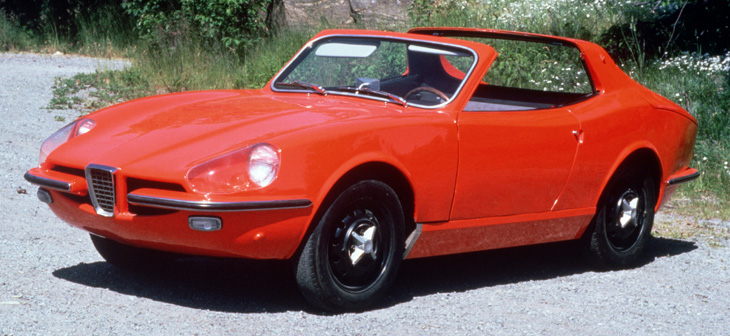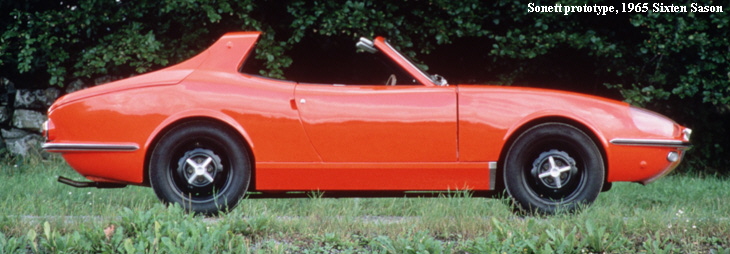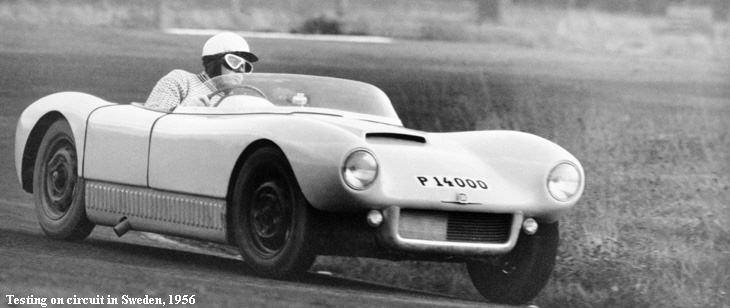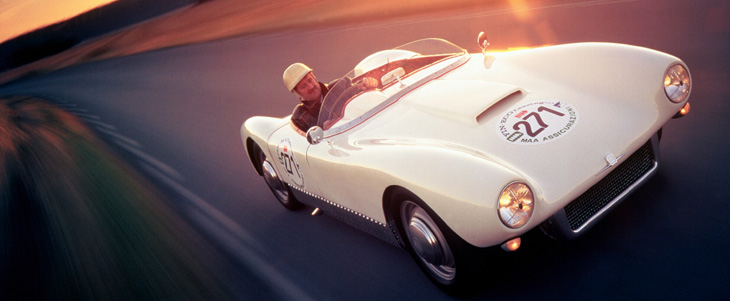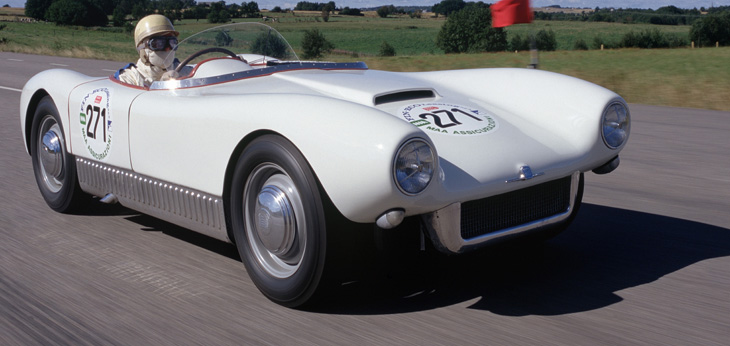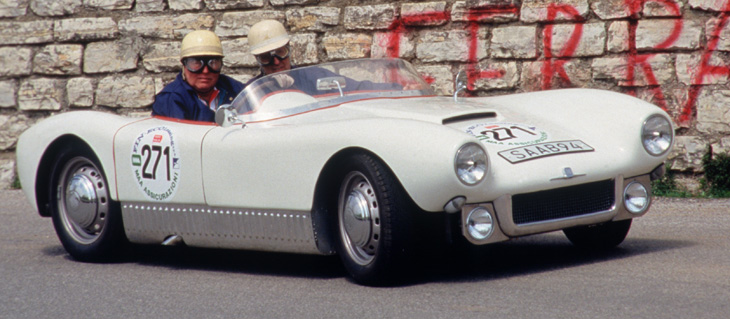|
|
|
|
1956-1974 - Saab Sonett
Unofficially known as the Saab 94, the Sonett Super Sport was an eye-catching two-seater sports car intended for competition use ('sonett' is Swedish for 'how nice'). Only six were ever built. It was designed and developed to give Saab, then a new arrival in the automotive industry, a competitive entry into international sports car racing. The small team behind the project was unimpressed by the use of heavy steel tubes that were welded together to create the chassis of competition cars at the time. They found an alternative solution in aircraft design. The result was a light but extremely strong 'monocoque' (single shell) structure made from riveted panels of aviation specification aluminum, to which the engine and suspension was directly mounted. Weighing just 70 kilos, the Sonett's hollow 'tub' utilised the elegant design principles of an aircraft fuselage. It was built six years before a similar concept revolutionised Grand Prix racing in the shape of Colin Chapman's Lotus 25 Formula One car. The car's low-slung bodywork was no less surprising. Based on a small-scale model by Saab designer Sixten Sason, it was moulded in glass-fiber reinforced plastic (GRP), a new material at the time. Sason complained about the shaping of the panels but GRP was chosen as it was much lighter than steel, even though the use of such a material was in its infancy. The Sonett's engine was rather more conventional. It was a highly-tuned development of the 748 cc, three cylinder two-stroke engine from the Saab 93 sedan. To improve weight distribution, the longitudinally mounted engine and gearbox were turned around through 180°. While still using front-wheel-drive, this installation gave the car a 'front, mid-engined' configuration, with the weight of the entire powertrain contained within the car's wheelbase. For good balance, the 60-liter fuel tank was also mounted in the side of the car opposite the driver. And to keep the front of the car as low as possible, the engine was canted over slightly to the right. Maximum power of 57.5 hp was modest for circuit racing, but with an all-up weight of only 500 kilos, the Sonett Super Sports had a good power-to-weight ratio of more than 100 bp per tonne. A rigid chassis giving nimble handling was also expected to compensate for whatever it lacked in outright power. The first prototype created a sensation at the Stockholm Motor Show in February 1956 and a test program immediately began. To speed up development work, another five Sonetts, with steel monocoques, were built. However, before a racing program got underway, new competition rules tempted Saab into international rallying with production-based cars as a more cost-effective operation. The rest, including Erik Carlsson's subsequent international rallying success, is history, as they say. All six cars built in 1956/57 still exist in working order. When it is not out on demonstration runs, the first
Sonett is displayed in the Saab Car Museum at Trollhättan, together with one other. The other four cars are owned by private collectors.
By the early 60's, Saab was achieving great success in international rallying with Erik Carlsson. The Saab 97 – marketed as the Sonett - was conceived as a rakish, sports coupé designed to capitalize on this rising tide of acclaim. Using Saab 96 components, the Sonett II (Sonett I was an open two-seater competition car built in 1956) featured sleek glass fiber bodywork. For ease of maintenance, the entire front section tilted forward to provide access to the engine. Early models had a tuned, triple carbureetor two-stroke engine giving 60hp. This soon gave way to a 65 hp, 1.7-litreter version of the V4 engine, sourced from Ford, which had been introduced for the 95/96 range. Models with this engine are distinguished by a bulge in the center of the hood. In 1970, Sonett III was premiered at the New York Motor Show, and featured longer, even lower bodywork. The sharp, more angular styling was the product of a co-operation between Saab and the Italian stylist Sergio Coggiola. The low nose of Sonett III required retractable, 'pop up' handlamps that were manually operated from inside the car. The sports seats were made of fiberglass and covered by a thin layer of padding. With an adjustable lumber support, they were surprisingly comfortable. Access to the engine was now achieved through a hatch on the bonnet, but the boot was significantly larger. In 1973, the addition of stout, self-repairing bumpers was required for the US market, the main focus of Sonett sales. Stripes on the side of the body were a later, sporty addition. A total of 10,219 Sonetts II and III were built.
|
|
|
|
|
